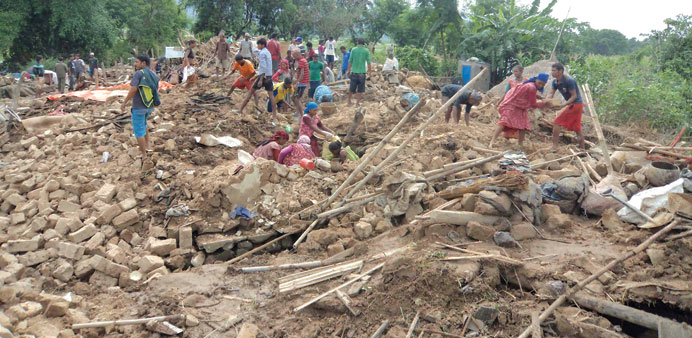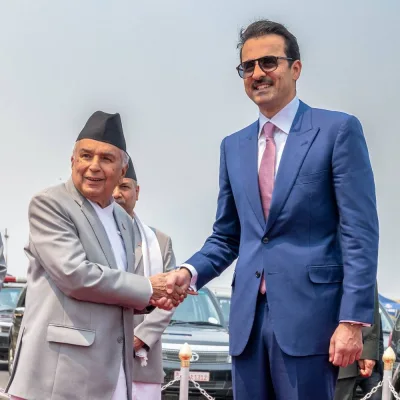Agencies/Kathmandu
Flash floods and mudslides following heavy rains have killed at least 53 people in Nepal over the past three days and cut off remote communities in the mountains, the government said yesterday.
The landslides and flooding were triggered by annual monsoon rains since Wednesday, causing rain-soaked earth and rocks to crash down on homes while rivers swelled and washed away low-lying villages.
Nepal’s home ministry said 75 people were unaccounted for and 36 others were in hospitals and medical centres.
It was not immediately clear if the missing people were trapped in their damaged homes, washed away by floods or out of contact due to snapped communication links, officials said.
Video clips on television showed people wading through waist-deep water carrying belongings as well as submerged houses.
Officials said more than 25% of Nepal’s 75 administrative districts were hit by landslides or floods.
“More than 200 houses are destroyed while hundreds of other homes are completely under water,” the government said.
About 3,500 people have been rescued and housed in school and community buildings, official Punnya Dhakal said.
“Because of the damage to roads in the area, we can only deliver relief supplies like tents and medicines by helicopter,” he said.
Army officials rescued around 300 people yesterday, while hundreds more waited for help in the worst-hit districts of Surkhet and Bardiya.
The rains have also forced officials to close a major bridge along the country’s longest highway after it developed cracks and caved in.
Meanwhile, Indian Ambassador Ranjit Rae announced assistance of Rs48mn for the victims of the floods and landslides in the country.
Rae made the announcement at an event here to mark India’s 68th Independence Day.
The water-level in major rivers has risen above danger mark, causing fears of more floods in a large swathe of land in the southern plains adjoining India.
In an emergency meeting chaired by India’s Cabinet Secretary Ajit Seth in New Delhi late Friday, it was decided to open gates of three dams on the India-Nepal border to ease the flood situation in Nepal.
Seth has instructed the authorities to open the gates of Kailashpur barrage in Kailai, Laxmanpur in Banke and Mahalisagar in Kapilvastu districts, according to the Indian embassy here.
The step was taken after Nepal’s ministry of foreign affairs asked India to help reduce the rising water level in India-bound rivers in Nepal.
In 2010, British climate consultancy Maplecroft rated mostly mountainous Nepal along with Bangladesh, India, Madagascar and Mozambique as among most vulnerable to climate change impact over the next 30 years.
Experts say climate change was causing excessive or scant rains, droughts, floods and landslides.

Flood victims collect their belongings from their destroyed homes at Motipur village of Dang district in eastern Nepal yesterday.


